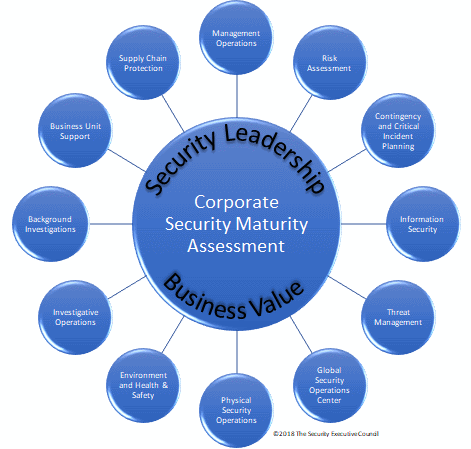A Blueprint for Corporate Security Quality: Guarding Your Venture
Wiki Article
From Cybersecurity to Physical Actions: Enhancing Corporate Safety in a Changing Globe
By combining the strengths of both cybersecurity and physical safety, companies can produce a thorough defense approach that resolves the varied array of hazards they face. In this conversation, we will discover the altering danger landscape, the requirement to incorporate cybersecurity and physical safety and security, the application of multi-factor authentication measures, the significance of employee recognition and training, and the adaptation of safety and security procedures for remote labor forces. By analyzing these vital locations, we will certainly gain useful understandings into just how organizations can enhance their corporate security in an ever-changing world.Understanding the Altering Risk Landscape
The developing nature of the modern-day world demands an extensive understanding of the altering hazard landscape for reliable corporate safety. In today's electronic and interconnected age, threats to business safety have actually come to be a lot more complex and sophisticated. As modern technology breakthroughs and services become progressively dependent on electronic framework, the capacity for cyberattacks, information breaches, and various other security violations has actually substantially raised. It is critical for organizations to remain informed and adjust their protection measures to resolve these progressing risks.One trick facet of recognizing the changing hazard landscape is acknowledging the different types of hazards that companies face. Furthermore, physical dangers such as theft, criminal damage, and corporate reconnaissance remain widespread worries for organizations.
Monitoring and assessing the risk landscape is crucial in order to recognize potential threats and vulnerabilities. This involves remaining updated on the most recent cybersecurity patterns, examining hazard intelligence reports, and conducting normal threat analyses. By understanding the altering danger landscape, organizations can proactively implement suitable security actions to minimize dangers and secure their properties, credibility, and stakeholders.
Integrating Cybersecurity and Physical Security
Integrating cybersecurity and physical safety is vital for extensive business defense in today's electronic and interconnected landscape. As companies increasingly rely upon innovation and interconnected systems, the limits between physical and cyber hazards are becoming blurred. To effectively secure versus these dangers, a holistic technique that incorporates both cybersecurity and physical safety and security actions is crucial.Cybersecurity focuses on securing electronic properties, such as systems, networks, and data, from unapproved access, interruption, and theft. Physical safety, on the other hand, includes measures to secure physical possessions, individuals, and facilities from threats and vulnerabilities. By integrating these two domains, companies can deal with susceptabilities and risks from both electronic and physical angles, therefore enhancing their total safety and security stance.
The integration of these 2 disciplines enables a more extensive understanding of safety and security dangers and allows a unified reaction to incidents. For instance, physical gain access to controls can be boosted by integrating them with cybersecurity protocols, such as two-factor authentication or biometric recognition. Similarly, cybersecurity actions can be complemented by physical safety and security procedures, such as security electronic cameras, alarm systems, and safe and secure access points.

Applying Multi-Factor Authentication Procedures
As companies progressively prioritize detailed safety actions, one effective method is the application of multi-factor authentication procedures. Multi-factor verification (MFA) is a safety and security technique that needs individuals to give numerous types of identification to access a system or application. This method includes an extra layer of protection by combining something the customer anonymous understands, such as a password, with something they have, like a safety or a fingerprint token.By applying MFA, companies can considerably boost their safety posture - corporate security. Standard password-based authentication has its constraints, as passwords can be quickly endangered or forgotten. MFA mitigates these dangers by adding an extra authentication variable, making it extra tough for unauthorized individuals to access to sensitive information
There are numerous kinds of multi-factor authentication approaches offered, consisting of biometric authentication, SMS-based confirmation codes, and equipment symbols. Organizations need to examine their certain requirements and select the most proper MFA remedy for their requirements.
Nevertheless, the implementation of MFA must be thoroughly prepared and implemented. It is crucial to strike a balance in between safety and security and use to avoid user disappointment and resistance. Organizations ought to also take into consideration prospective compatibility concerns and supply ample training and support to make sure a smooth transition.
Enhancing Worker Understanding and Training
To reinforce corporate safety, companies have to prioritize improving staff member recognition and training. Lots of safety and security violations official statement take place due to human error or lack of awareness.Efficient staff member awareness and training programs should cover a vast array of subjects, consisting of information defense, phishing attacks, social design, password health, and physical protection actions. These programs should be customized to the specific needs and obligations of different worker functions within the organization. Normal training sessions, simulations, and workshops can aid staff members create the necessary skills and knowledge to respond and identify to security risks successfully.
Moreover, organizations need to motivate a culture of security recognition and give continuous updates and pointers to keep workers notified about the most recent dangers read this and mitigation methods. This can be done via interior communication networks, such as e-newsletters, intranet websites, and e-mail campaigns. By fostering a security-conscious labor force, organizations can significantly lower the possibility of security events and protect their valuable possessions from unauthorized gain access to or concession.

Adapting Safety Measures for Remote Labor Force
Adjusting corporate safety and security procedures to fit a remote workforce is necessary in ensuring the protection of sensitive info and properties (corporate security). With the increasing trend of remote work, organizations need to carry out ideal security measures to reduce the risks connected with this brand-new means of functioningOne critical facet of adapting security procedures for remote job is establishing safe interaction channels. Encrypted messaging platforms and digital exclusive networks (VPNs) can assist safeguard delicate details and prevent unauthorized gain access to. Furthermore, organizations need to apply the use of strong passwords and multi-factor authentication to enhance the security of remote access.
An additional vital factor to consider is the execution of safe remote gain access to services. This includes giving employees with safe and secure accessibility to corporate resources and data via online desktop facilities (VDI), remote desktop computer procedures (RDP), or cloud-based solutions. These modern technologies make sure that delicate details stays protected while making it possible for workers to do their duties efficiently.

Last but not least, comprehensive protection understanding training is critical for remote employees. Training sessions ought to cover finest techniques for firmly accessing and taking care of sensitive information, determining and reporting phishing efforts, and keeping the total cybersecurity health.
Conclusion
Finally, as the hazard landscape proceeds to evolve, it is essential for organizations to enhance their security measures both in the cyber and physical domains. Integrating cybersecurity and physical security, implementing multi-factor verification steps, and improving staff member awareness and training are vital steps in the direction of achieving durable business safety and security. In addition, adjusting safety procedures to suit remote labor forces is imperative in today's altering world. By applying these steps, organizations can alleviate dangers and safeguard their useful possessions from possible dangers.In this conversation, we will certainly check out the changing threat landscape, the demand to integrate cybersecurity and physical security, the execution of multi-factor verification steps, the importance of worker awareness and training, and the adjustment of security actions for remote workforces. Cybersecurity actions can be complemented by physical protection steps, such as monitoring cameras, alarm systems, and secure gain access to factors.
As companies progressively focus on comprehensive safety measures, one efficient strategy is the application of multi-factor verification measures.In final thought, as the danger landscape proceeds to evolve, it is vital for companies to strengthen their safety gauges both in the cyber and physical domain names. Incorporating cybersecurity and physical security, executing multi-factor verification actions, and enhancing employee recognition and training are vital actions in the direction of attaining durable company protection.
Report this wiki page